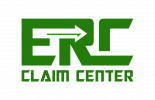Supply chain distribution plays an important role in employee satisfaction and retention within organizations. From providing employees with the tools, materials, and information needed to do their jobs effectively to creating a workplace environment with the least amount of frustration, efficient distribution through a company’s supply chain can dramatically impact employee morale and productivity.
So, Is Supply Chain Distribution A Qualifying ERC Factor

However, businesses may not realize that improving supply chain distribution processes as a strategy for improving employee retention could help qualify them for the Employee Retention Credit. The Employee Retention Credit is a tax credit established by the government to incentivize businesses to keep employees on their payroll during the pandemic. In this article, we will discuss how supply chain distribution affects employee satisfaction and turnover, what qualifies a business for the Employee Retention Credit, and how improvements to distribution processes could help businesses meet the requirements to claim the credit.
How Supply Chain Distribution Affects Employee Satisfaction?

The efficient distribution of goods, materials, information, and resources within a company’s internal supply chain has a tremendous impact on employee satisfaction and morale. When employees have reliable and timely access to what they need to do their jobs, it reduces their stress levels and frustration. Knowing that they have the tools, equipment, parts, and supplies on hand to complete tasks and meet deadlines increases job fulfillment for employees.
Issues with supply chain distribution, such as delays in receiving essential materials, broken or outdated equipment, lack of proper workplace tools, and invalid or missing information, can greatly aggravate employees. They begin to feel that the company does not truly support or value them if they are unable to get what they need to complete their work properly and productively. As a result, employee satisfaction and motivation decrease.
Problems that stem from poor supply chain distribution, like employees standing around idle waiting for missing parts or supplies, can create a less efficient work environment with lower productivity overall. Employees may begin to perceive these distribution issues as a sign that the company is disorganized or not operating smoothly. This perception further reduces job satisfaction and the feeling of being valued as an employee.
In contrast, businesses with well-oiled supply chain distribution processes tend to have higher levels of employee satisfaction. Employees feel trusted and empowered when they have quick, reliable access to workplace resources. They experience less frustration and increased morale knowing that the tools and materials they require are readily available.
Impact on Employee Turnover
Problems with supply chain and material distribution are common reasons employees decide to leave their jobs. When employees do not have the tools, information, or materials they need to do their work properly, it causes frustration and dissatisfaction that can lead them to seek employment elsewhere.
Not having reliable access to the resources required to perform one’s job effectively makes employees feel undervalued and that the company does not care about improving their work experience. These feelings often coincide with a desire to find a new job where they will be given the proper support to excel in their role.
Businesses with ineffective supply chain distribution processes tend to struggle with higher employee turnover as dissatisfied workers eventually leave for opportunities where they believe their needs will be better met. Distribution issues that are not addressed in a timely manner signal to employees that improvements may not be forthcoming. This further contributes to employees wanting to find jobs with companies that have their act together.
In contrast, organizations with streamlined supply chain distribution processes where employees can get what they need when they need it typically have more engaged and loyal employees. Workers feel invested in a company that demonstrates it truly values their success and productivity through efficient, well-managed distribution systems. This level of operational excellence correlates with lower employee turnover as satisfied workers are more likely to remain with an employer that supports their work in this optimal way.
Qualifying for the Employee Retention Credit
The employee retention credit is a tax credit established by the U.S. government in March 2020 to incentivize businesses to retain employees on their payroll despite suffering economic hardship due to the COVID-19 pandemic.
To qualify for the credit, businesses must show that their operations were fully or partially suspended due to orders from a government authority limiting commerce, travel, or group meetings due to COVID-19. They must also demonstrate a significant decline in gross receipts compared to the same calendar quarter in the previous year.
Improving distribution processes within a company’s supply chain to address issues that were negatively impacting employee retention and satisfaction could help businesses meet these qualification requirements. If the unsatisfactory distribution was causing employee turnover and reduced productivity prior to the improvements, it suggests that the business was experiencing economic hardship and suspended operations to some degree.
To claim the employee retention credit based on supply chain distribution improvements, businesses must have documentation showing how the changes directly led to retaining employees on the payroll that the credit would apply. This could include records of issues that caused employees to consider leaving prior to the improvements, data on employee satisfaction and productivity gains after the changes, and notes on employees who decided to stay after their needs in the workplace were better met.
The amount of the retention credit a business can claim depends on the total qualified wages and health insurance costs paid to eligible employees during the period. The maximum credit for each eligible employee is $5,000 per quarter, up to $50,000 for all quarters.
Businesses should carefully review the requirements for the employee retention credit and assess whether making changes to their distribution processes to boost retention could help them justify qualifying for tax relief. With proper documentation of the impact on retaining eligible employees, supply chain improvements could potentially provide a boost via the credit.
Conclusion
In summary, supply chain distribution processes have a significant impact on employee satisfaction, productivity, and retention within organizations. Issues related to the inefficient distribution of goods, materials, and information are common reasons employees consider leaving their jobs. However, as we have discussed, implementing improvements to distribution processes to boost employee morale and job fulfillment could potentially help businesses qualify for the Employee Retention Credit.
If a company can show through proper documentation that distribution changes led to retaining employees from who they received the credit, then supply chain improvements may be a viable path toward justifying qualification. So businesses should evaluate their distribution challenges and prioritize initiatives that will maximize employee value, support, and ease of work. By enhancing the supply chain experience for employees, companies can not only boost retention and satisfaction but also gain an additional benefit through the employee retention tax credit.


